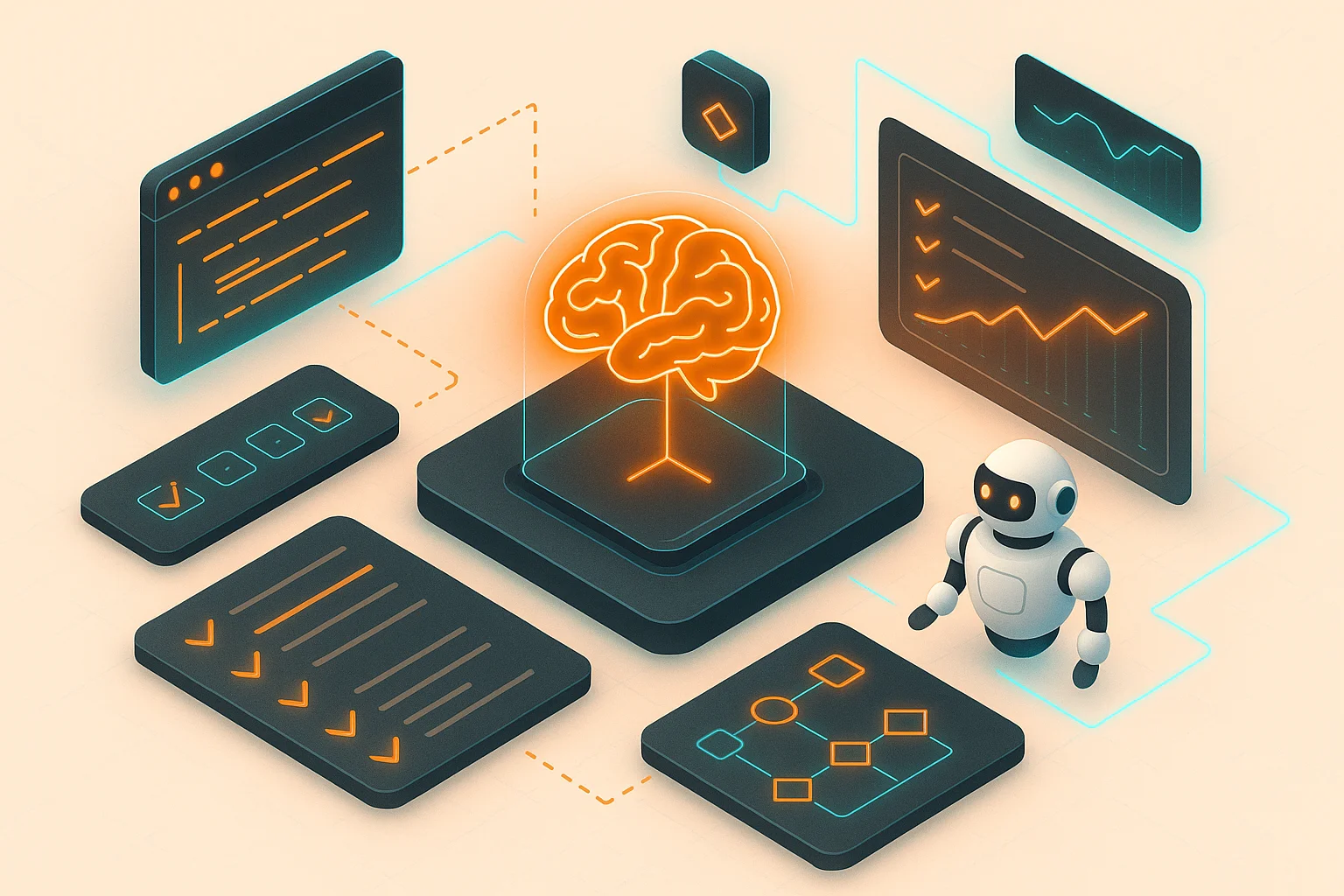Top AI Test Case Generators: A Detailed Review

Quick answer
Match AI test generators to your stack: Copilot/Cursor for rapid unit tests, Diffblue for deep Java coverage, Applitools for visual regression. Propel validates that generated tests fail before the fix, pass afterward, and stay stable in CI so automation enhances—not hurts— your pipeline.
How we evaluated tools
- Coverage lift and mutation score improvement.
- Accuracy: percentage of tests accepted without major edits.
- Maintenance overhead (flake rate, update cadence).
- Integration experience: IDE, CI/CD, and language support.
- Enterprise readiness: security, audit logs, deployment options.
Top generators and best-fit scenarios
GitHub Copilot (testing extensions)
Drafts Jest, pytest, and JUnit tests inline. Great for greenfield features and filling gaps in unit coverage. Combine with reviewer oversight to ensure assertions target business logic, not implementation details.
Diffblue Cover
Java-specific platform that generates thousands of unit tests with up to 80% method coverage. Ideal for enterprises modernising legacy services before major refactors.
CircleCI Test Insights (formerly Ponicode)
Multi-language support (TS, JS, Python, Java). Tight IDE integration, quick adoption, best for teams new to AI-generated tests.
Parasoft Jtest
Enterprise-grade suite combining AI test generation, coverage analytics, and compliance reporting. Suited to regulated industries needing audit-ready artefacts.
Applitools Eyes
AI-powered visual testing for UI regressions across browsers/devices. Complements functional tests by spotting layout drift and accessibility regressions.
EvoSuite
Open-source tool using evolutionary algorithms to generate high-coverage Java test suites. Great for teams wanting on-prem, customisable automation.
Propel keeps generated tests reliable
- Validates that new tests fail without the fix and pass after.
- Flags brittle or redundant assertions during review.
- Tracks flaky tests and routes them to QA owners for remediation.
- Logs lineage: which tool produced each test for auditing and rollback.
Adoption playbook
- Select a high-value repo (legacy service, critical API) for the pilot.
- Generate tests in a separate branch; review via Propel to ensure quality.
- Integrate accepted tests into CI and monitor stability for two sprints.
- Document prompts/configurations that worked; share in your tooling handbook.
- Scale to more services, automating nightly regeneration for evolving APIs.
FAQ: AI-generated tests
How do we stop AI from producing low-value tests?
Define acceptance criteria (behaviour focus, no implementation peeking) and use Propel to reject tests that simply mirror code. Mutation testing helps surface weak assertions.
Can these tools handle integration or E2E flows?
Some (TestCraft, Applitools) specialise in UI and API flows, but they still need human oversight. Treat AI output as a draft and validate data setup and teardown manually.
What about proprietary code confidentiality?
Choose self-hosted options (Diffblue, EvoSuite) or vendors that offer VPC deployment. Propel supports private inference, keeping test artefacts inside your perimeter.
Ready to Transform Your Code Review Process?
See how Propel's AI-powered code review helps engineering teams ship better code faster with intelligent analysis and actionable feedback.

